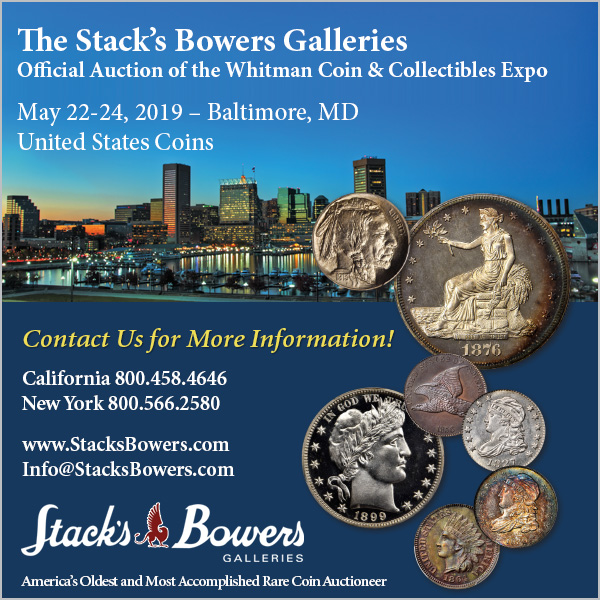
PREV ARTICLE
NEXT ARTICLE
FULL ISSUE
PREV FULL ISSUE
BOOK REVIEW: THE EAGLE THAT WAS FORGOTTENTim Janecke penned this review of Joel Orosz's 1988 book about the colonial-era collector Pierre Eugene Du Simitiere in the the Spring 2019 issue of The C4 Newsletter, published by the Colonial Coin Collectors Club (C4). We're republishing it here with permission. Thanks to C4 President Jack Howes for assistance. Members of specialty groups like C4 are serious students of numismatics, and their interest in numismatic literature and research parallels that of E-Sylum readers and our sponsor, the Numismatic Bibliomania Society. Last week we republished Jack's own article about non-numismatic books about the U.S. colonial era. -Editor
THE EAGLE THAT WAS FORGOTTEN By Dr. Joel J. Orosz (Tim Janecke)
The book’s title, The Eagle That Was Forgotten, stems from a poem by that same title written by Vachal Lindsay. Understanding that poem is essential to understanding Dr. Joel J. Orosz's book. The poem pays tribute to a noble bird that has lived its life and now lies quietly below a stone, its victories forgotten. Orosz's book explains how Pierre Eugene Du Simitiere (1737-1784) achieved significant accomplishments in American numismatics during America’s colonial, revolutionary and early independent days without gaining financial wealth or public acknowledgement. Dr. Orosz helps explain some of the wonderful accomplishments of Du Simitiere, things left unknown by most numismatists and scholars of today. Du Simitiere was an artist who emigrated from Switzerland to the Caribbean region and then on to colonial America while in his twenties. He paid attention to monetary systems and coins found in each region, beginning to collect some coins at that time. From his story it is clear that there were coin collectors in Philadelphia, New York and New Jersey in the 1760s. There was also the sale of an American coin collection by a private party during this era. Living in Philadelphia, Du Simitiere had a small but important collection of coins and artifacts which he compiled into a museum. He had New England coins, British coins, ancient coins, Roman medals, gold coins, plus stories of his own experiences to offer. Admission was fifty cents and the tour lasted around one hour. Interestingly, Du Simitiere remained neutral during the American Revolution. He did correspond with John Adams, Thomas Jefferson and George Washington about coins and currency, yet when the Tories occupied Philadelphia, he knew and conversed with them as well. He worked on a medal of George Washington, having made a portrait of him during a sitting, and he suggested using a woman as the subject of Liberty for the Seal of the United States. Du Simitiere died a poor person. His museum was still in place in Philadelphia, but his income was low. He had been giving drawing classes, yet remained poor. I am pleased to have read that he could not sell his coin collection. He held it too dear to himself. He was an avid collector and I suspect a wonderful person in many ways. I appreciate a great deal that Dr. Orosz wrote this book. I met him at The World’s Fair of Money in Philadelphia this past summer. He signed my copy of The Secret History of the First U.S. Mint, as did the coauthor, Leonard Augsburger. Dr. Orosz is a tireless researcher who supports his claims well. He has written several other books on subjects including coin investing, effective foundation management and studies regarding museum activities. He is a frequent contributor to numismatics periodicals, too, including The Numismatist and Coin World. I encourage anyone interested in early American numismatics to give this book a read. What I found out was that there was a good deal of private numismatic activity in this country prior to the nineteenth century.
For more information about the Colonial Coins Collectors Club (C4), see:
Joel's book was my own introduction to the life of this groundbreaking yet largely forgotten numismatic pioneer, and should be required reading for anyone interested in the development of the hobby in the U.S. Together with American Numismatics Before the Civil War by Q. David Bowers, The Eagle That Was Forgotten is a foundational work for researchers and collectors alike. -Editor
To read the earlier E-Sylum article, see:

Wayne Homren, Editor The Numismatic Bibliomania Society is a non-profit organization promoting numismatic literature. See our web site at coinbooks.org. To submit items for publication in The E-Sylum, write to the Editor at this address: whomren@gmail.com To subscribe go to: https://my.binhost.com/lists/listinfo/esylum All Rights Reserved. NBS Home Page Contact the NBS webmaster 
|
